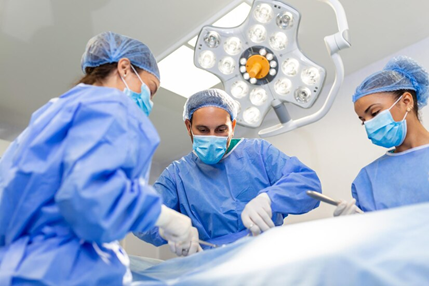Laparoscopic hernia repair has become a revolutionary surgical technique, offering patients a quicker recovery and less post-operative pain compared to traditional open surgery. While this minimally invasive approach has transformed the treatment of hernias, a successful recovery depends on adopting certain lifestyle changes. This article highlights the key aspects of life after laparoscopic hernia repair and the necessary modifications to facilitate a smooth healing process.
Understanding Laparoscopic Hernia Repair
A minimally invasive hernia surgery involves making small incisions through which a camera and certain specialized instruments are used to repair, minimizing trauma to surrounding tissues. This results in less pain, shorter hospital stays, and a quicker return to normal activities. It is commonly performed to treat inguinal, femoral, umbilical, and incisional hernias.
Lifestyle Changes for a Swift Recovery
Follow Medical Instructions: Adhering to your surgeon’s post-operative instructions is essential for a successful recovery. This includes taking prescribed medications, managing pain, and keeping the surgical site clean and dry.
Gradual Physical Activity: While rest is crucial in the initial recovery phase, gradually increasing physical activity is equally important. Light walking can help prevent blood clots and improve circulation. However, avoid strenuous activities until your healthcare provider gives the green light.
Balanced Diet: A diet rich in nutrients and fiber promotes healing and prevents constipation, a common post-operative issue. Focus on foods to support tissue repair and boost your immune system.
Hydration: Staying well-hydrated is vital for digestion, preventing dehydration, and supporting the body’s healing processes. Choose water over sugary or caffeinated drinks.
Smoking Cessation: If you smoke, this is an excellent opportunity to quit. Smoking can impede healing by constricting blood vessels and reducing oxygen supply to tissues. Seek help from doctor to stop smoking.
Weight Management: Maintain a healthy weight reduces stress on the surgical site and contributes to overall well-being. Once cleared by your doctor, engage in low-impact exercises, and follow a balanced diet.
Incision Care: Keep the surgical incisions clean and dry as instructed to minimize infection risk and promote proper healing. Avoid activities that could strain or disrupt the incisions.
Listen to Your Body: Pay attention to your body’s signals. If you experience persistent pain, unusual swelling, fever, or any other concerning symptoms, contact a doctor promptly.
Conclusion
Laparoscopic hernia repair has improved hernia treatment by offering patients a faster, more comfortable recovery. Embracing recommended lifestyle changes, such as maintaining a healthy diet, gradually resuming physical activity, and managing your weight, is crucial to ensuring a smooth healing process. By following these guidelines and consulting with your healthcare provider, you can set yourself on the path to a healthier, hernia-free life.



